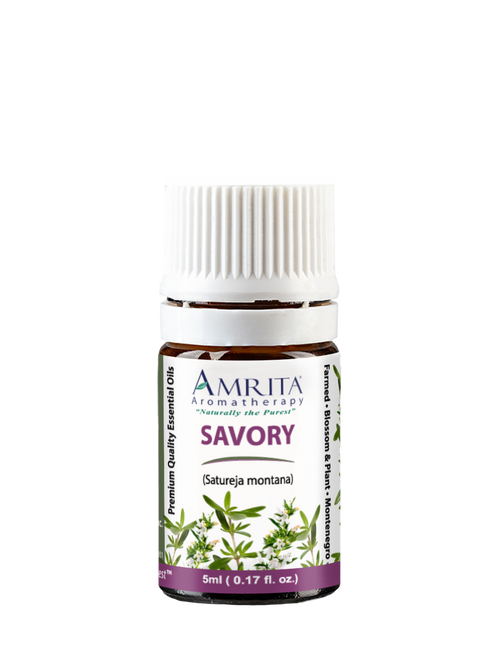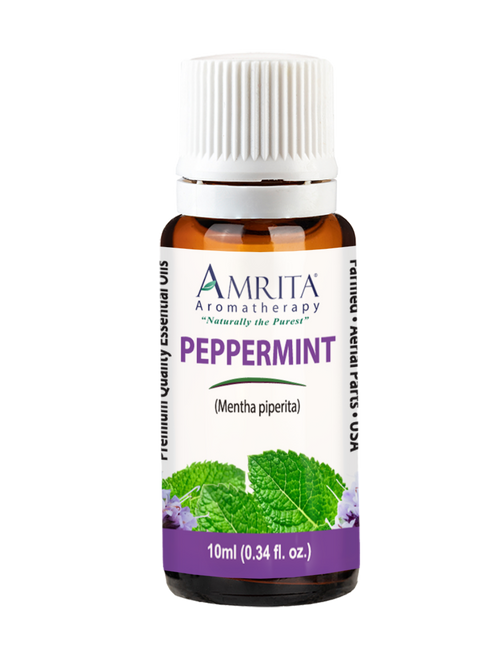- Other Names
- Eugenia caryophllata and Clove Flowerbud
- Farming Method
- Eco Ethical
- Plant Part
- Bud
- Country of Origin
- Madagascar
- Application Method
- Diffusion, Inhalation, and Topical
- Scientific Name
- Syzygium aromaticum
- Extraction Method
- Steam Distilled
Clove Bud Essential Oil is a warm, sweet-spicy oil with a bold, invigorating aroma. Traditionally valued for its ability to ease tooth and gum discomfort, freshen breath, and support respiratory health, it also promotes mental clarity and alertness.* Its natural insect-repelling properties make it a versatile addition to any home remedy collection.*
This Fair Trade oil is sourced from the aromatic flower buds of evergreen trees native to Indonesia and is rich in eugenol and β-caryophyllene — compounds prized in oral care formulations. Just a small amount adds comforting warmth to diffuser blends, especially in winter, and it pairs beautifully with citrus oils like Orange to refresh and uplift the air.*
Used in both natural wellness routines and perfumery, Clove Bud Essential Oil also lends richness and spice to blends — from festive holiday scents to exotic floral compositions. Whether you're crafting a warming massage blend, enhancing a diffuser experience, or seeking natural relief for everyday discomforts, this oil offers a bold and grounding aromatic presence.*
About the Plant:
Clove comes from a highly aromatic evergreen tree native to the Maluku Islands of Indonesia, often growing up to 35 feet tall. The tree produces large green leaves and clusters of crimson-red flower buds, which are harvested just before they bloom. The word “clove” originates from the Latin “clavus,” meaning “nail,” due to the nail-like shape of the dried buds — a resemblance that inspired its name in several languages over centuries.
As the buds mature, they change color from pale green to vibrant red, signaling that they are ready for harvest. Once dried, these buds become the familiar cloves used in culinary, medicinal, and aromatic applications. When placed in the mouth, a single dried clove delivers an intense taste and aroma, accompanied by a warming and numbing sensation. This powerful effect comes from the essential oil released as the bud is chewed, which is rich in the compound eugenol.
The essential oil is obtained through steam distillation of these dried flower buds, concentrating their potent properties. Clove Bud Essential Oil retains the plant’s signature warmth and numbing qualities and has long been prized for its therapeutic uses — from soothing oral discomfort to supporting respiratory function and enhancing mental clarity.* The clove tree’s buds, leaves, and even stems all contain essential oil, but the buds are considered the most aromatic and therapeutically beneficial.
Where It Grows:
Clove Bud comes from the tree Syzygium aromaticum, which is native to the Maluku Islands (also known as the Moluccas) in eastern Indonesia. These islands are historically known as the “Spice Islands,” and have been the heart of clove cultivation since at least the Chinese Han period (220–206 BC), when cloves were used to freshen breath.
Today, while the Maluku Islands still produce a significant portion of Indonesia’s clove crop, clove trees are also widely cultivated in other tropical and subtropical regions around the world. These include parts of Asia such as India, Sri Lanka, and Pakistan; regions of Africa like Madagascar, Tanzania, and the Comoros Islands; as well as areas in the Americas. The tree thrives in warm, humid climates, making it a valuable crop across the globe.
Traditional Uses and Lore:
Clove Bud has played a vital role in traditional medicine for centuries. It was among the earliest essential oils to be used topically, especially for dental care — soothing toothaches, easing gum pain, and even treating warts.* Dentists have long recommended diluted Clove Bud Essential Oil as a mouthwash, while its undiluted form has been applied directly to painful areas for its numbing and antiseptic effects.* In childbirth, midwives have used Clove Oil to dress the umbilical cord, capitalizing on its cleansing and protective qualities.* In ancient China, Clove Buds were chewed to freshen breath before addressing royalty, and Clove Oil was used as a remedy for bronchitis and other respiratory ailments.*
During the Middle Ages in Europe, Cloves gained a reputation not only for their medicinal value but also for their protective properties. Clove Bud Essential Oil was blended with Lavender to create perfumes, and cloves were embedded into citrus fruits to form pomanders — fragrant charms carried or hung in homes to guard against illness during outbreaks like the plague.* These aromatic spheres were symbols of wealth and health and were often exchanged as tokens of affection.* Culinary traditions also embraced Cloves, using them to enhance both sweet and savory dishes across Asia, the Middle East, and Europe. Its strong, warming flavor lent itself well to spice blends, hot beverages, and preserved meats.
In modern times, Clove remains a staple in natural wellness practices. Clove tea is consumed globally to settle nausea and aid digestion, while the buds are still chewed to freshen breath naturally.* It’s also a prized ingredient in global cuisines — from Mexican and Indian to Mediterranean — pairing well with cinnamon, citrus peel, vanilla, and other aromatic spices. Beyond culinary uses, Clove Oil has been studied for its antimicrobial and antifungal properties, with applications ranging from food preservation to natural wood treatments.* In Indonesia, Clove’s cultural significance remains strong, where it is not only a beloved spice but also a key ingredient in traditional Clove cigarettes known as "kretek," highlighting its enduring presence in both medicinal and everyday life.
Other Facts:
-
-
- Scent: Rich, Strong, Sweet, and Spicy Aroma
- Fragrance Note: Middle Note
- Composition: Eugenol, Eugenol Acetate, Caryophyllene, and Isocaryophyllene
- Family: Myrtaceae Family
-
*These statements have not been evaluated by the Food and Drug Administration. These products are not intended to diagnose, treat, cure, or prevent any disease.
- Supports Smoother Digestion and Healthy Gut Function
- Relieves Sinus Congestion and Bronchial Irritation
- Awakens the Senses and Revives Mental Energy
- Click here to read Amrita's blog: All About Clove Bud Essential Oil
- Check out the tabs below to learn more about Clove Bud
You must highly dilute this oil before using it on the skin, up to 0.5% maximum. Otherwise, it could cause severe irritation.*
Topical Application (for use on the skin):
|
||||
|
|
Diffusion / Inhalation Application (add a few drops to a nebulizer or nasal inhaler):
|
|
Other Uses for Clove Bud Essential Oil:
-
- Insecticide for Bedbugs and Mites:
- Mix one part Clove Oil to 10 parts water, and spray directly on the bedding.
- To Repel Moths and Silverfish:
- Apply Clove Bud Essential Oil on cotton balls or a cloth, and place in your closet.
- Insecticide for Bedbugs and Mites:
-------------------------------------------------------------------------------------------------------------------------------------------------------------------
Blends Well With:
-------------------------------------------------------------------------------------------------------------------------------------------------------------------
Safety Precautions:
-
- Clove Bud Essential Oil is highly potent and can cause skin irritation or burns if applied undiluted.*
- Avoid use on sensitive skin: Do not apply to broken, damaged, or sensitive skin areas.*
- Please perform a patch test before first use.*
- Not recommended for children: Avoid use on or around infants and young children.*
- Avoid use during pregnancy or breastfeeding.*
- Avoid use on sensitive skin: Do not apply to broken, damaged, or sensitive skin areas.*
- Clove Bud Essential Oil is highly potent and can cause skin irritation or burns if applied undiluted.*
General Safety Precautions:
-
- Use essential oils only in diluted form on the skin and never internally.
- Always be careful when using essential oils with children.
- Give them only low doses, or better, consult a qualified aromatherapy expert before using.
- Use essential oils with care and only under the proper guidance of an expert while pregnant or if you have liver damage, epilepsy, cancer, or other serious health problems.
*These statements have not been evaluated by the Food and Drug Administration. These products are not intended to diagnose, treat, cure, or prevent any disease.
Clove Bud Essential Oil is a warm, spicy-scented oil with a long history of therapeutic use. It is especially well-known for its ability to numb tooth pain and freshen breath, thanks to its high content of eugenol — a natural compound with strong analgesic and antiseptic properties.* This makes it a popular choice for oral care, offering temporary relief from toothaches and gum discomfort.* Additionally, it supports digestive health by stimulating appetite, relieving nausea, and reducing bloating, gas, and stomach discomfort, making it useful for those with sluggish digestion or appetite loss due to stress or illness.*
Beyond physical benefits, Clove Bud Essential Oil also has powerful effects on the mind.* Its stimulating properties can enhance mental clarity, increase alertness, and support memory and concentration, which makes it an excellent choice for focus during work or study.* Diffusing Clove can help create a warm, uplifting atmosphere that boosts energy and dispels mental fatigue.* Emotionally, its grounding and comforting nature can help reduce feelings of sluggishness, low mood, or lack of motivation.*
Clove Bud is also valued for its respiratory and immune-supportive properties. It can ease symptoms of colds, coughs, bronchitis, sinusitis, and asthma by reducing inflammation, opening airways, and clearing mucus.* When diffused, it may help purify the air and support the body’s natural defenses during seasonal illness.* Its antimicrobial and antifungal properties have shown effectiveness against various strains of bacteria and fungi, including those linked to respiratory infections and yeast overgrowth, making it a powerful oil for wellness and prevention.*
While Clove Bud Essential Oil has been studied for its potential benefits — including its antioxidant and antimicrobial activity — its potency makes it too harsh for most direct skin applications.* Because of its strong chemical makeup, particularly its high eugenol content, it should only be used on the skin with significant dilution and great care, if at all.* Instead, Clove shines in other wellness uses such as aromatherapy, oral care (with proper dilution), and natural cleaning formulations.* Whether used to freshen the air, support immune function, or energize the mind, Clove Bud Essential Oil remains a powerful, protective, and versatile addition to holistic routines.*
The following is a list of conditions which Clove Bud Essential Oil addresses by category:
|
|
|
|
*These statements have not been evaluated by the Food and Drug Administration. These products are not intended to diagnose, treat, cure, or prevent any disease.
Bottles are filled by volume. Some bottle sizes may not be filled to the top, but do contain the volume of oil specified.
|
Click the link below to view GC Analysis: |
Click the link below to view CoA Analysis: |
|
Click the link below to view Safety Data Sheet (SDS): |














